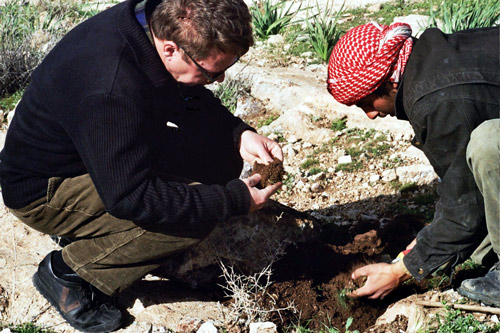• Home • Curriculum vitae • Publications • Earthworms • Insects • Plants • Research projects •

Biodiversity of earthworms

Oligochaeta (from Greek ‘oligos’, few, and ‘chaite’, chaeta) and Hirudinea (leeches) are two subclasses of Clitellata. Although represented in the Levant, subclass Hirudinea will not be discussed in this website. The fully developed embryos of Clitellata resemble miniature adults because in comparison with other annelids (the segmented worms), they do not have larval stages in their life-cycle. The subclass Oligochaeta includes different types of terrestrial and aquatic worms including earthworms
The most conspicuous feature of earthworms is their segmented body along the anterio-posterior body axis. The origin of the segmentation can be traced back to the Precambrian (more than 541 MYA) (Martynov 2012). However, the appearance of Clitellata had been associated with the occurrence of humus in soil in terrestrial ecosystems during the Palaeozoic Era (Omodeo 2000). This opinion is consistent with the reported oldest fossils of Clitellata possibly dating to the Lower Silurian, more than 419.2 MYA (Mikulic et al. 1985).
The Polychaeta → Oligochaeta transition, from aquatic to terrestrial soil ecosystems, was accompanied by anatomical and functional novelties. Body musculature and vascular apparatus developed in order to facilitate digging in soil. This led to an increase in body length and width (the bodies of the largest earthworm species nowadays are composed of more than 1,000 segments). As we showed, the function of the paratomic fission in Polychaeta to produce one new individual asexually each time (de facto a copy of a parent) changed to the production of a tail in earthworms (Pavlíček et al. 2014). Since the types and consistencies of food available in terrestrial ecosystems were different from that available in aquatic ecosystems, calciferous glands developed to adjust the pH of the digested food, as well as the development of one, or several, gizzards in order to facilitate the digestion of hard food.
In some earthworm lineages, this induced the establishment of intestinal caeca to accommodate symbiotic microorganisms (mainly bacteria) that produce enzymes, helping to digest the food and provide for missing nutrients. Other novelties and developments relate to the reproductive system and to mating (for details see (Omodeo, 2000) (Pavlíček and Csuzdi, 2012, modified)).
References
Martynov, A. V. (2012). Ontogeny, systematics, and phylogenetics: Perspectives of future synthesis and a new model of the evolution of bilateria. Biology Bulletin, 39(5), 393–401.
Mikulic, D. G., Briggs, D. E. G., & Kluessendorf, J. (1985). A New Exceptionally Preserved Biota from the Lower Silurian of Wisconsin, U.S.A. Philosophical Transactions of the Royal Society of London. Series B: Biological Sciences, 311, 75–85.
Omodeo, P. (2000). Evolution and biogeography of megadriles (Annelida, Clitellata). Italian Journal of Zoology, 67 (February 2012), 179–201.
Pavlíček, T. and Csuzdi, Cs. (2012). Chapter 23 : Clitellata : Oligochaeta: Earthworms. In D. J. Sparrrow & E. John (Eds.), An Introduction to the Wildlife of Cyprus (pp. 587–599). Terra Cypria.
Pavlíček, T., Hadid, Y., Cohen, T., Glasstetter, M., Snir, S., Mısırlıoğlu, M, et al. (2014). “Opening Pandora’s Box”: II. Segmentation and evolution of hermaphroditic annelids. In T. Pavlíček, P. Cardet, M. T. Almeida, C. Pascoal, & F. Cássio (Eds.), Advances in Earthworm Taxonomy VI. (Annelida: Oligochaeta). Proceedings of the 6th International Oligochaeta Taxonomy Meeting (6th IOTM), Palmeira de Faro, Portugal, 22-25 April, 2013(pp. 38–49). Heidelberg: Kasparek Verlag.
A regular earthworm survey started in the mid-1990s. The survey has been conducted by Dr Tomáš Pavlíček (Institute of Evolution, University of Haifa, Israel) and Professor Csaba Csuzdi (Hungarian Natural History Museum, Budapest, and Department of Zoology, Eszterházy Károly University, Eger, Hungary).
So far we surveyed the following parts of the world:
- the Levant (Cyprus, Israel, the Sinai Peninsula, the Hasehmite Kingdom of Jordan, the Hatay Province in Turkey, Lebanon, Syria) --> Link
- French Guiana (list in preparation)
- New Caledonia --> Link
- Upper Mesopotamia (list in preparation)

| • Home • Curriculum vitae • Publications • Earthworms • Insects • Plants • Research projects • |
•
Contact
•
Links
•
Webdesign
•
Copyright •

|